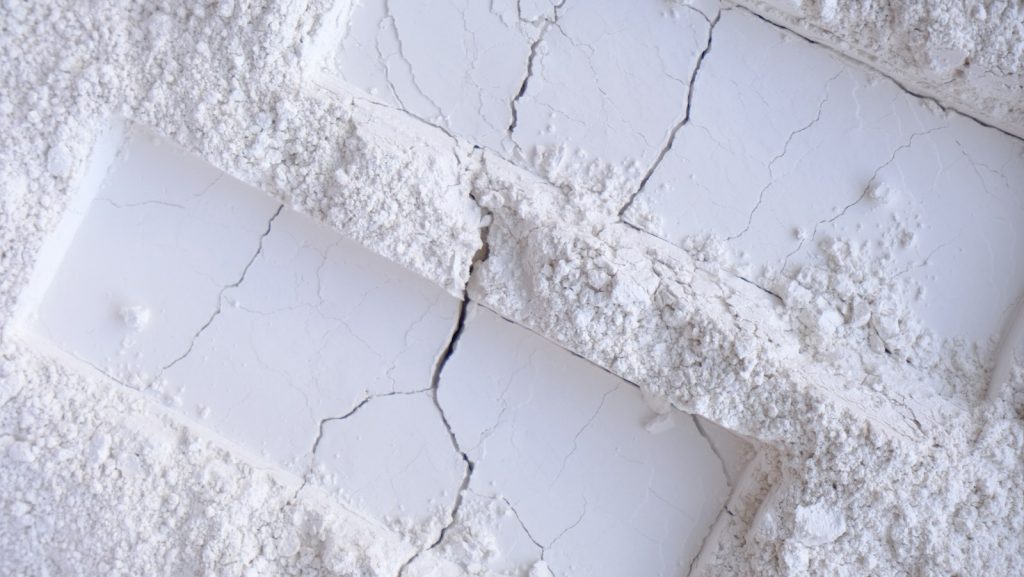One of the myths that originally prompted me to write this book is the persistent myth that white flour turns into glue in the gut, binding, clogging, and coating the stomach and intestines. Those who make this claim often advocate for consuming whole grain flour or other whole grain foods instead of white flour foods. So is there any merit to the argument? And are the proposed remedies helpful alternatives?
The story that usually accompanies the myth makes it more believable. Most of us have created papier-mache at some point in our lives by using white wheat flour paste. Those who perpetuate the myth remind us of this paste and suggest that just as wheat flour paste can glue paper, it will glue our insides. At a very superficial level, this story makes sense, and therefore it is believable, so long as one does not scratch below the surface. However, it turns out that it simply is not true.
Gluten is a (now infamous) protein contained in wheat and some other grains, and it is gluten that is responsible for the gluelike properties of wheat flour paste. So it turns out that both white and whole grain wheat flour can be used equally for the purpose of creating paste for gluing paper, since both contain gluten. The gluten cross-links, forming a glue.
Gluten is actually a matrix of proteins, including glutenin and gliadin. Glutenin is a very long protein that is principally responsible for the glue-like nature of gluten. Gliadin, on the other hand, is compact and does little to form any glue-like substances. Let’s next look at how the human body digests these substances.
Most of us these days have heard of gluten sensitivity or diseases such as Celiac disease, which involves problems with gluten. It turns out that for most people, the primary problem with gluten isn’t with gluten as a whole, but specifically with gliadin, the compact protein that makes up part of the matrix. Gliadin can be difficult to digest because of its complexity and compact nature. And for some people (estimated to be somewhere in the range of 0.5 to 1 percent of the population) gliadin creates serious problems in the intestines. But remember, gliadin is not the protein that creates glue – that’s glutenin. So what happens to glutenin in the human digestive system?
It turns out that enzymes secreted in the human digestive system – proteases that break down proteins – pull apart glutenin into amino acids. The intestines then absorb the amino acids.
So does wheat flour create glue in the guts? Nope. It does not, because glutenin, the protein responsible for the glue-like nature of wheat flour paste, gets completely digested.
By now, we’ve already seen that flour does not, in fact, create glue in the guts. But all the same, let’s see if the suggestions made by those who promote that myth have any merit on their own. Namely, are whole grain flours or other whole grain foods better than white flour for preventing digestive problems?
A whole grain contains a bran layer, a germ, and an endosperm. When grain is refined, all that remains is the endosperm, containing mostly starch and some protein. Most people are completely capable of digesting the protein, starch, and any fats contained within the grain, so whether a grain is whole or refined, those parts will be broken down and absorbed. The endosperm will often contain some small amount of fiber that resists digestion by human digestive enzymes, but that fiber is typically fermentable, so it will be eaten by the bacteria in the large intestines. The only part of the grain that resists digestion both by enzymes and by bacteria is the insoluble fiber that makes up the bran.
If one is genuinely allergic or intolerant to a particular grain, then the presence or absence of bran will make no difference. For example, gluten, the protein in wheat and some other grains that can cause major health problems for a small percentage of the population, is contained in the endosperm. In other words, it remains once the bran has been milled away, but it also exists in whole wheat. So if someone has Celiac disease, both refined wheat and whole wheat are equally problematic. But for everybody else this is not a problem.
In conclusion, white flour does not turn into glue in the guts. And for the vast majority of people, white flour poses no special harm to the digestive system. Of course, some people have problems with gluten or allergies to various grains. In those cases, the problems are not mediated by the presence or absence of bran, so the recommendations made by those who perpetuate the glue myth are unfounded.



